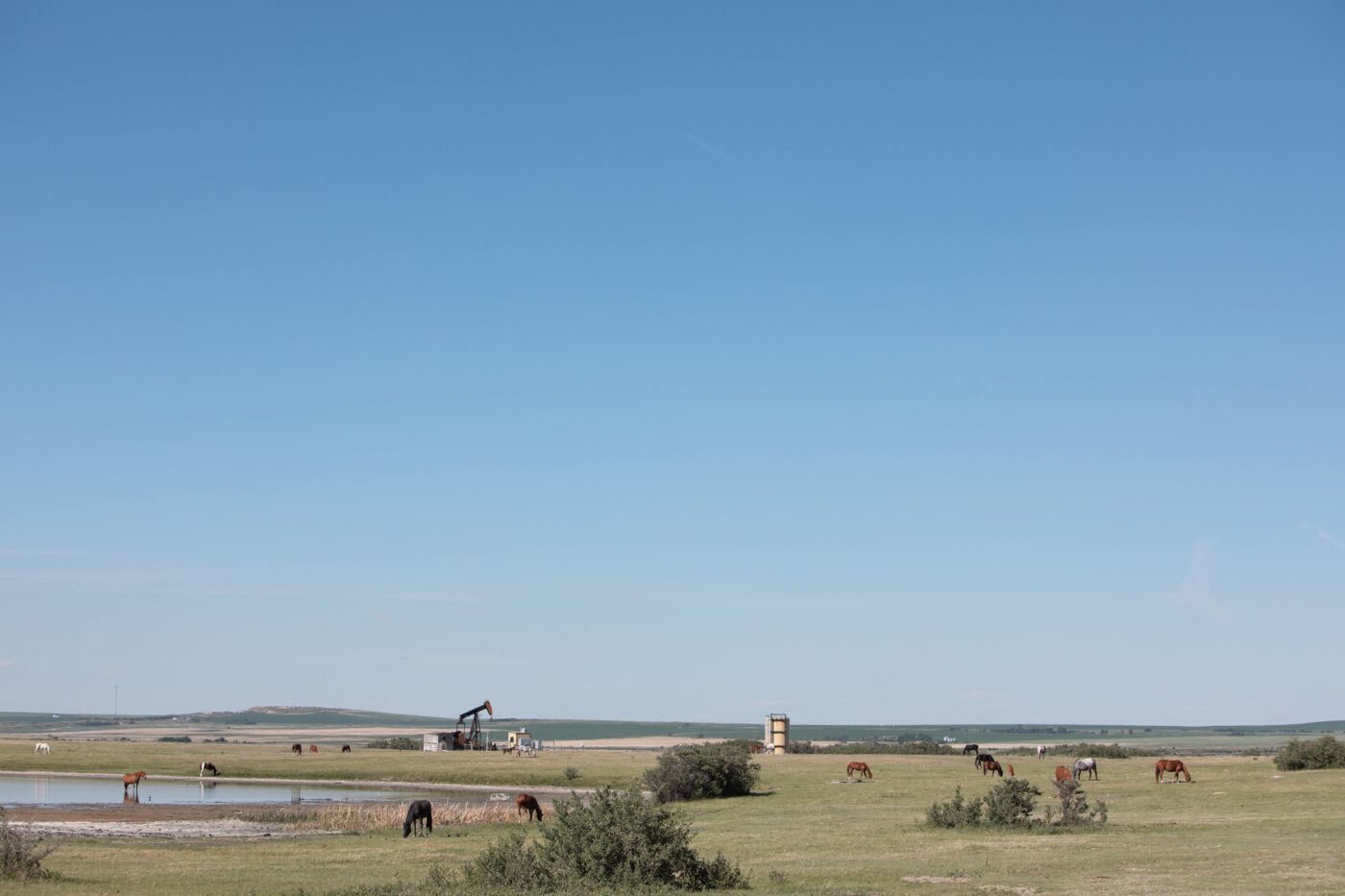
EXPLAINER
Alberta wants to subsidize oil and gas companies to clean up their mess. Here’s what you need to know
Alberta wants to subsidize oil and gas companies to clean up their mess. Here’s what you need to know
The proposed pilot oil and gas cleanup incentive program — first pitched to the government by Alberta Premier Danielle Smith when she was an industry lobbyist — has led to a barrage of criticism from banks and economists
By Drew Anderson
Feb. 23, 2023
The Alberta government is under fire for a proposed pilot program that would give financial incentives to oil and gas companies to clean up old wells littered across the province.
The plan, championed by Premier Danielle Smith, has been attacked as a corporate giveaway for immensely profitable companies and a violation of the polluter pay principle.
The Globe and Mail dubbed it “corporate welfare for the oil industry.” The Toronto Star reported the program “hits a nerve in Alberta.” Others mused that the “Danielle Smith handout might be a step too far for Albertans.” The controversy isn’t going away.
Smith first proposed the idea back in 2021, when she was lobbying the government. After she became premier, she announced she would move ahead with her idea.
Backlash began to build.
On Wednesday, the premier released a statement pushing back on what she called “inaccurate claims” about the program, but it did little to shed more light on the program or to quell critics.
Here’s what you need to know about Alberta’s latest plan, officially dubbed the Site Liability Incentive Program, to clean up its tens of thousands of old oil and gas wells.
How will Danielle Smith’s oil well cleanup program work?
The Alberta government says it wants to pursue a pilot program over three years that could offer $100 million in royalty credits to companies that clean up inactive, suspended or partially abandoned wells at least 20 years old and drilled prior to 1980. In industry parlance, an “abandoned” well is one that has been safely sealed and is not the same as an “orphan” well, which has been left behind by its rightful owner.
On Wednesday, the premier released a statement pushing back on what she called “inaccurate claims” about the program, but it did little to shed more light on the program or to quell critics.
Here’s what you need to know about Alberta’s latest plan, officially dubbed the Site Liability Incentive Program, to clean up its tens of thousands of old oil and gas wells.
How will Danielle Smith’s oil well cleanup program work?
The Alberta government says it wants to pursue a pilot program over three years that could offer $100 million in royalty credits to companies that clean up inactive, suspended or partially abandoned wells at least 20 years old and drilled prior to 1980. In industry parlance, an “abandoned” well is one that has been safely sealed and is not the same as an “orphan” well, which has been left behind by its rightful owner.
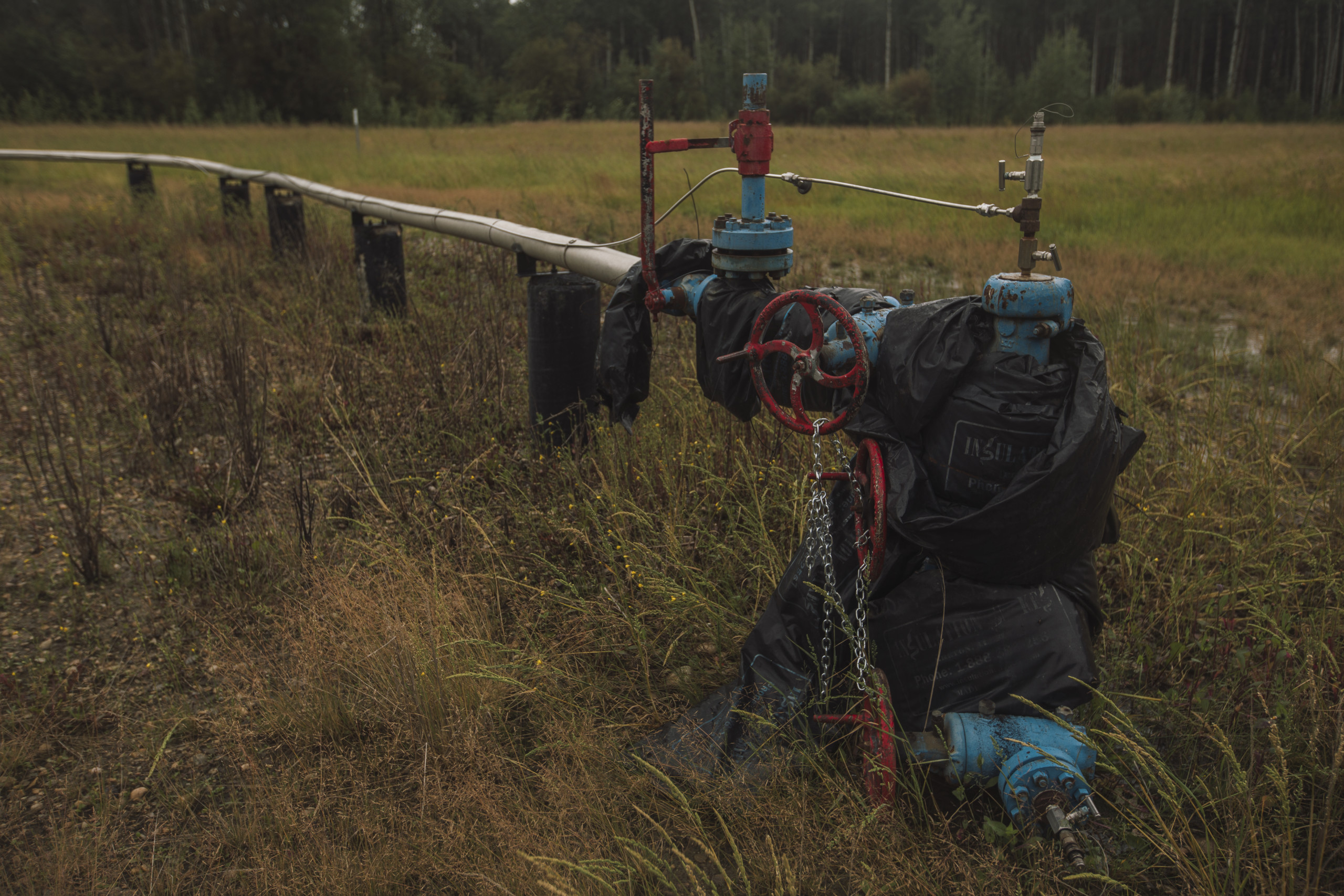
There are currently no timelines to ensure oil and gas companies clean up old wells as they’re legally required to do. The Alberta government is proposing a pilot program that incentivizes them to do their work by paying them for it.
How exactly those credits will be applied — and how much money companies will get in the form of credits — is yet to be determined. The proposed program is currently open for feedback, so the details aren’t finalized, but the government has started consultation and provided an outline of its plans. But companies that clean up old wells would be eligible for breaks on the royalties they would have to pay on new wells drilled after the cleanup.
The government says it wants to know from consultations whether “royalty credits should be provided dollar-for-dollar for site closure costs.”
All work that would earn credits would need to be completed within the three years of the pilot.
Companies are not eligible for the credits if they owe taxes to municipalities, First Nations or Métis settlements, owe money to the province or the Alberta Energy Regulator, or owe land rent payments to landowners.
The government says companies must also be in compliance with the regulator’s liability framework — its guiding document on how to manage old energy infrastructure — but it’s unclear whether that applies across all of a company’s holdings or only relates to the individual sites in question.
In order to receive the credits, companies must conduct an environmental site assessment, signed off on by a reclamation professional, on the land in order to prove the cleanup work was completed.
What is the Alberta government saying in defence of the subsidized oil well cleanup program?
The government wants input on whether the credits expire and, if so, how long they are valid. It also wants to hear whether stakeholders think the credits should be transferable, but does say a company could acquire inactive sites in order to clean them up and receive credits.
Smith, responding to a barrage of criticism about the program (more on that later), released a statement on Feb. 22 saying the consultations will take several months.
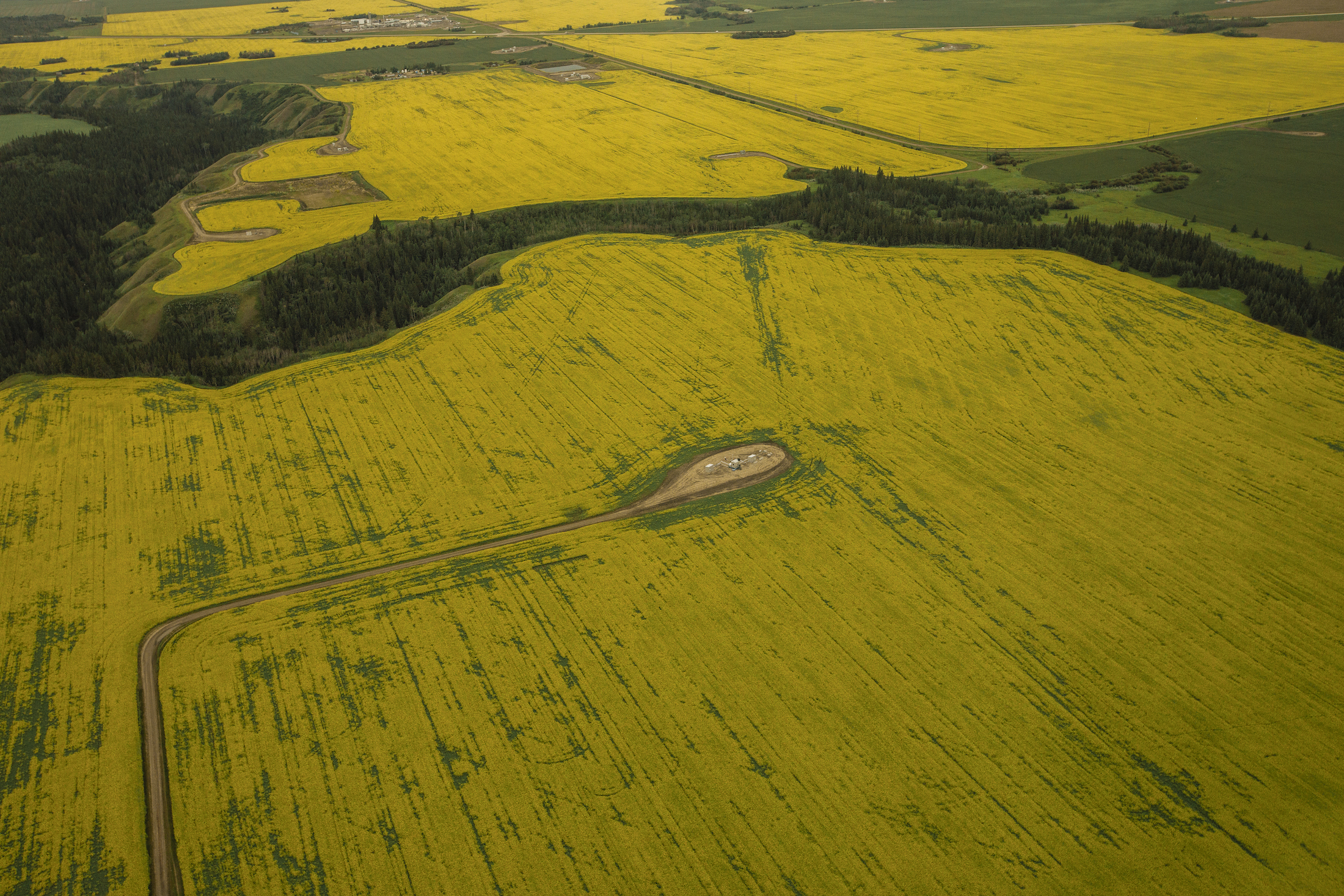
Oil and gas infrastructure is spread out across Alberta, much of it inactive. The Alberta government says it is seeking to reduce the impact on landscapes and the Albertans that depend on them.
She also said the amount companies would have to spend to earn credits would have to be above and beyond what they are currently required to spend each year, something the government initially said it would consult on.
“While final decisions have not been made, the total amount of royalty credits proposed to be used for the pilot program is likely to be up to $100 million over three years — after which time, the government would assess the effectiveness of the program and consult again before deciding how best to proceed,” she wrote.
A spokesperson for Minister of Energy Peter Guthrie did not respond to specific questions about the proposed pilot, including compliance requirements.
“The list of proposed details were accurate at the time of the engagements,” spokesperson Gabrielle Symbalisty wrote in an email to The Narwhal. “Feedback from those engagement sessions are being worked into the pilot plan proposal. That being said, the pilot is still under development and will need to go through the cabinet process after completion.”
“While final decisions have not been made, the total amount of royalty credits proposed to be used for the pilot program is likely to be up to $100 million over three years — after which time, the government would assess the effectiveness of the program and consult again before deciding how best to proceed,” she wrote.
A spokesperson for Minister of Energy Peter Guthrie did not respond to specific questions about the proposed pilot, including compliance requirements.
“The list of proposed details were accurate at the time of the engagements,” spokesperson Gabrielle Symbalisty wrote in an email to The Narwhal. “Feedback from those engagement sessions are being worked into the pilot plan proposal. That being said, the pilot is still under development and will need to go through the cabinet process after completion.”
Whose idea was it to subsidize Alberta’s oil well cleanup?
Back in 2021, Danielle Smith was working as a lobbyist — the president of the Alberta Enterprise Group, a business advocacy organization.
At that time, she wrote a letter to then-energy minister Sonya Savage outlining a proposal she called “R-Star” — the basis for the current pilot program.
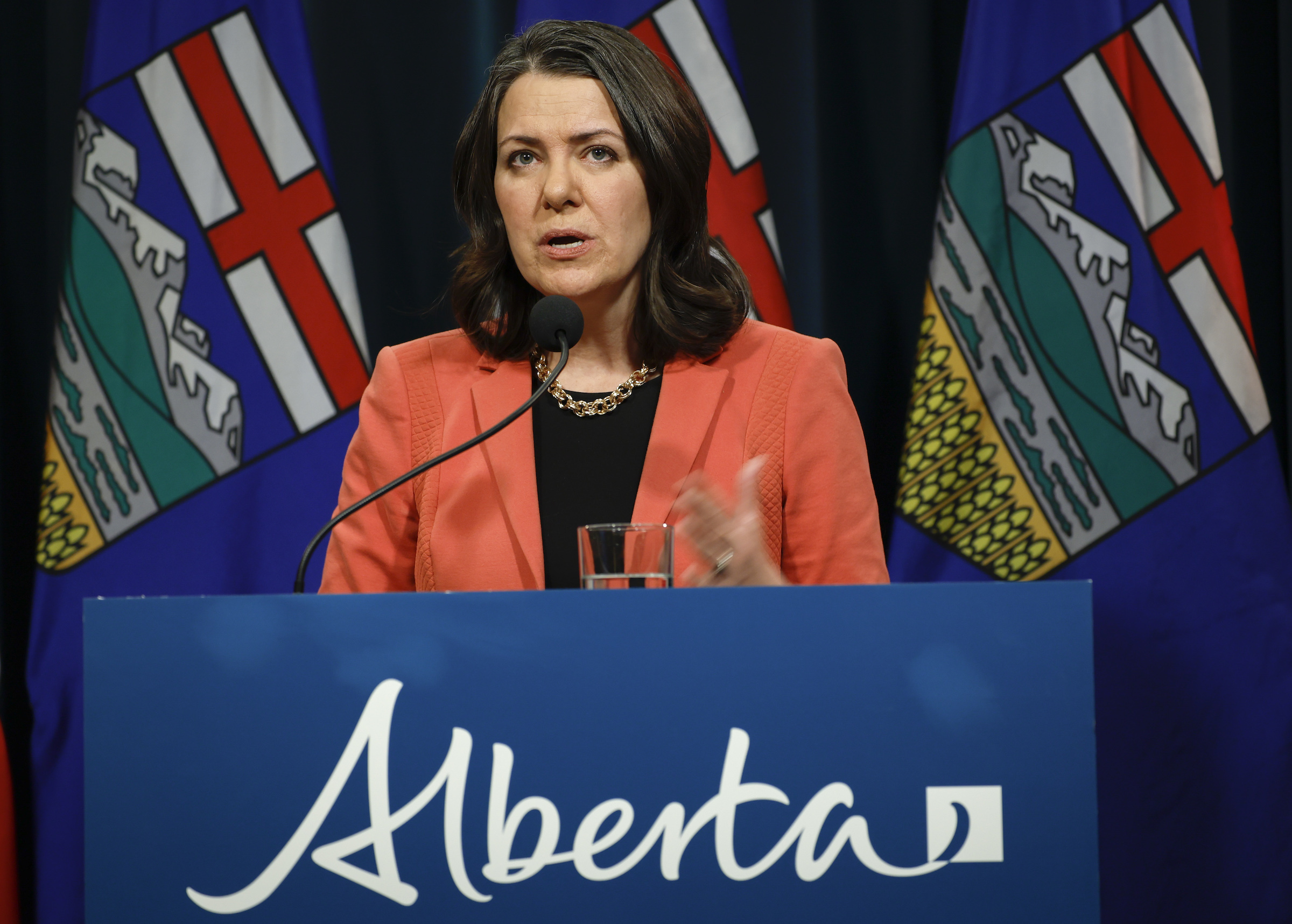
Smith first proposed the idea of paying oil and gas companies to do their own cleanup back in 2021, when she was lobbying the government. Photo: Jeff McIntosh / Canadian Press
In her pitch letter to Savage, Smith said the failures of the current system leads to the accumulation of orphaned sites, land left to sit without reclamation, as well as unpaid taxes and leases.
“This has resulted in bad press and a lack of goodwill in rural Alberta, which is reducing support for the energy sector and impacting the government’s popularity,” she wrote.
In her pitch letter to Savage, Smith said the failures of the current system leads to the accumulation of orphaned sites, land left to sit without reclamation, as well as unpaid taxes and leases.
“This has resulted in bad press and a lack of goodwill in rural Alberta, which is reducing support for the energy sector and impacting the government’s popularity,” she wrote.
Critics keep saying the program could be a $20 billion handout. Where does this number come from?
It’s all over social media and at the top of a lot of talking point memos these days.
That figure comes from Smith’s letter to Savage, where she said an analysis shows $20 billion in credits could, through a combination of new drilling and closure, generate 366,000 jobs and contribute more to royalties, taxes and GDP.
It’s a big number that has been seized by the Opposition NDP for use to fan opposition to the plan.
Aren’t companies already required to clean up their old wells?
It is a legal requirement for companies to clean up their wells. The basis of Alberta’s environmental rules and regulations is the polluter pay principle — a company that makes a mess is responsible for cleaning it up.
Alberta’s Environmental Protection and Enhancement Act specifically recognizes “the responsibility of polluters to pay for the costs of their actions,” and approval of well licences in the provinces considers the ability of a company to pay for the lifecycle maintenance of a site through to closure and reclamation.
But there are no timelines, and sometimes companies go bankrupt, leaving behind wells with no owner. The regulator also does not collect enough money to cover cleanup costs if a company orphans a site.
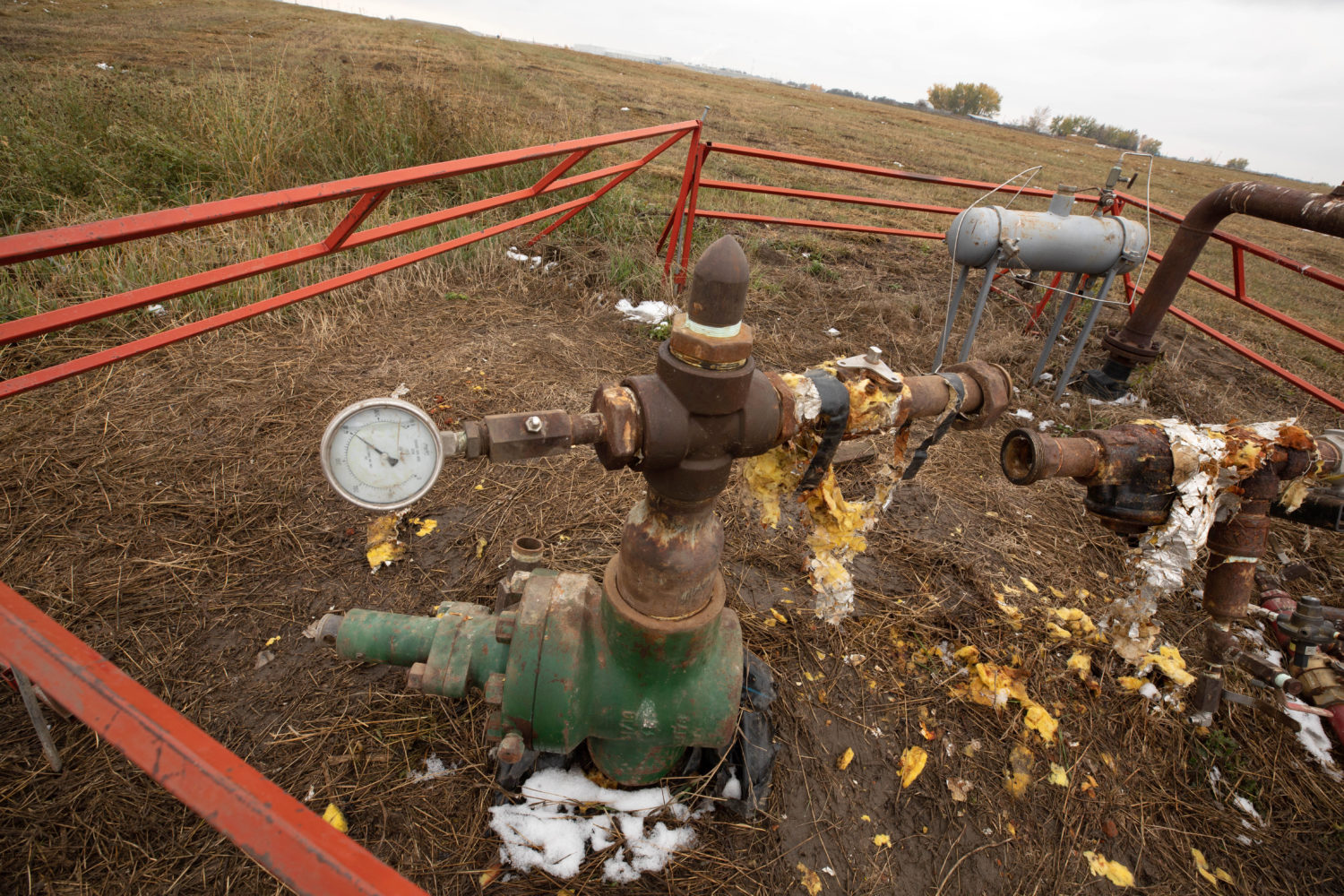
Orphaned oil and gas wells have no legal owner and can pose safety risks and concerns for landowners. Photo: Theresa Tayler / The Narwhal
There are, however, minimum amounts a company must spend each year on closure work. In 2023 it is $700 million industry-wide, and projected to be $764 million in 2024. Individual rates depend on the financial health of the company.
The regulator recently brought in a new liability framework intended to better assess the long-term financial health of companies prior to approving new licences.
It said in 2021 that the changes were necessary because “even during times of prosperity, the amount of closure work has often lagged behind” and it was “clear that how we manage liability has not slowed the growth of inactive sites.”
It also recently wrapped up a five-year Inactive Well Compliance Program meant to ensure those wells are in line with regulations. A spokesperson for the regulator told The Narwhal that program resulted in 27,352 out of 30,834 non-compliant inactive wells being brought into compliance, meaning they are no longer breaching rules laid out to ensure the safety of wells left sitting, unused, on the landscape.
The industry-funded Orphan Well Association should, in theory, have enough money to cover the costs for cleaning up wells left behind by bankrupt companies, but it does not.
How big is the oil well cleanup problem in Alberta?
In short, it is big.
There are approximately 460,000 wells in the province, according to the Alberta government. Of those, there are currently 75,786 oil and gas wells sitting inactive — these are wells still owned by a solvent company but not producing oil or gas.
Data on inactive wells in the province on Feb. 22, 2023, shows 19,713 wells — 26 per cent of all inactive oil and gas wells — are non-compliant with regulations at this time.
There are over 7,000 orphan sites in the province — an inactive well without a solvent owner to pay for cleanup. Approximately 170,000 wells are abandoned — capped and put out of service — but which have not been reclaimed.
There are, however, minimum amounts a company must spend each year on closure work. In 2023 it is $700 million industry-wide, and projected to be $764 million in 2024. Individual rates depend on the financial health of the company.
The regulator recently brought in a new liability framework intended to better assess the long-term financial health of companies prior to approving new licences.
It said in 2021 that the changes were necessary because “even during times of prosperity, the amount of closure work has often lagged behind” and it was “clear that how we manage liability has not slowed the growth of inactive sites.”
It also recently wrapped up a five-year Inactive Well Compliance Program meant to ensure those wells are in line with regulations. A spokesperson for the regulator told The Narwhal that program resulted in 27,352 out of 30,834 non-compliant inactive wells being brought into compliance, meaning they are no longer breaching rules laid out to ensure the safety of wells left sitting, unused, on the landscape.
The industry-funded Orphan Well Association should, in theory, have enough money to cover the costs for cleaning up wells left behind by bankrupt companies, but it does not.
How big is the oil well cleanup problem in Alberta?
In short, it is big.
There are approximately 460,000 wells in the province, according to the Alberta government. Of those, there are currently 75,786 oil and gas wells sitting inactive — these are wells still owned by a solvent company but not producing oil or gas.
Data on inactive wells in the province on Feb. 22, 2023, shows 19,713 wells — 26 per cent of all inactive oil and gas wells — are non-compliant with regulations at this time.
There are over 7,000 orphan sites in the province — an inactive well without a solvent owner to pay for cleanup. Approximately 170,000 wells are abandoned — capped and put out of service — but which have not been reclaimed.
Who’s paying for Alberta’s oil well cleanup now?
Officially, oil and gas companies are required to pay the full costs of cleaning up wells and the sites they are drilled on. But that has not always been the case.
Sometimes companies simply close their doors and desert the wells, leaving them as orphans.
“What we’ve learned, and what Albertans have learned, is that the cheapest way to get out of reclamation is going bankrupt,” Paul McLauchlin, president of the Rural Municipalities of Alberta, told the Canadian Press in January.
Orphan wells, once officially declared so by the regulator, fall under the purview of the Orphan Well Association. That association received $335 million in loans from the province between 2017 and 2020 in order to deal with a significant backlog.
The federal government also loaned the association $200 million in 2020, following a previous injection of $30 million in 2017.
Even if a well never becomes an orphan, companies have also already received aid to clean up their wells and facilities. The federal government handed $1 billion to Alberta for cleanup grants in 2020: the bulk went to one municipality and just three companies, two of which were oil giants CNRL and Cenovus.
The regulator said it could not say whether that funding helped reduce the overall liability burden in the province because it did not have access to the government’s data.
Estimates for the total cost of cleaning up Alberta’s oil and gas liabilities range from $58 billion to as high as $260 billion.
Who stands to benefit from this program?
The government argues this is a win-win-win. Companies get financial incentive to clean up old sites and drill new ones. The government gets an infusion of cash from job creation and new royalties and taxes. Albertans finally get some of their land cleaned up.
But it’s clear the beneficiaries will be oil and gas companies with a significant stockpile of old wells that need cleaning up.
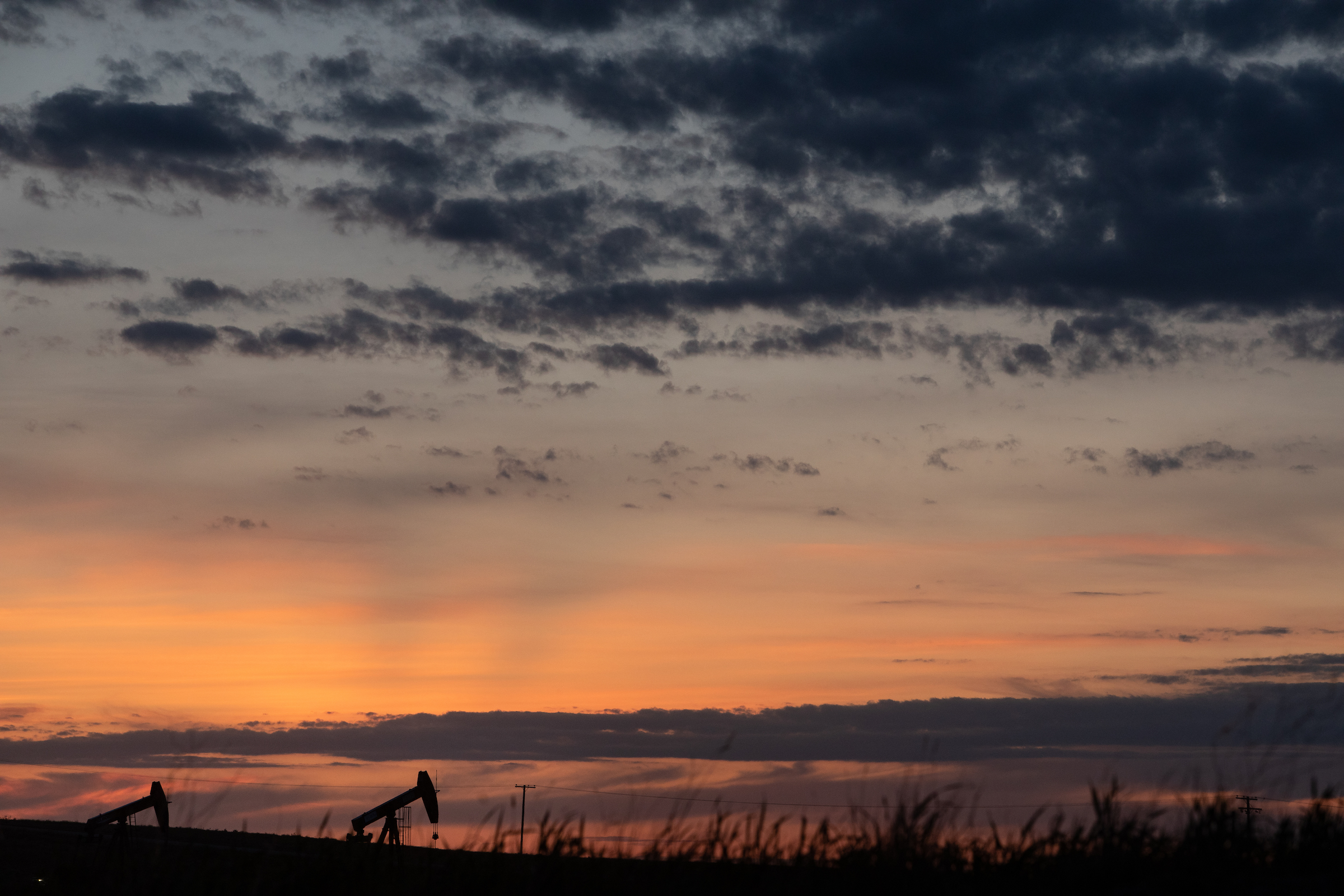
Despite facing financial difficulties in recent years, Alberta’s major oil and gas producers are now raking in huge profits. These companies may stand to benefit from Smith’s program.
Smith’s letter to Savage in 2021 was focused on the benefit of the program to junior oil and gas companies, smaller operations which are sometimes drowning in liabilities, but the majors will certainly benefit too.
An analysis by Scotiabank as part of a research note available to subscribers, says it expects the biggest winner of the program would be CNRL, the largest oil producer in the country, followed by Cenovus and Paramount Resources.
But that doesn’t mean only major oil companies are set to benefit. Of the companies with the highest number of eligible wells in their inventory, the majority are junior companies, according to the analysis.
Aren’t oil companies swimming in cash?
Smith’s pitch to Savage came at a time when the pandemic and a price crash were taking chunks out of the oil and gas industry and she warned the situation had “become dark for the junior oil and gas sector.”
That is not the story today.
Companies have seen profits surge over the past year, hitting record highs for many companies.
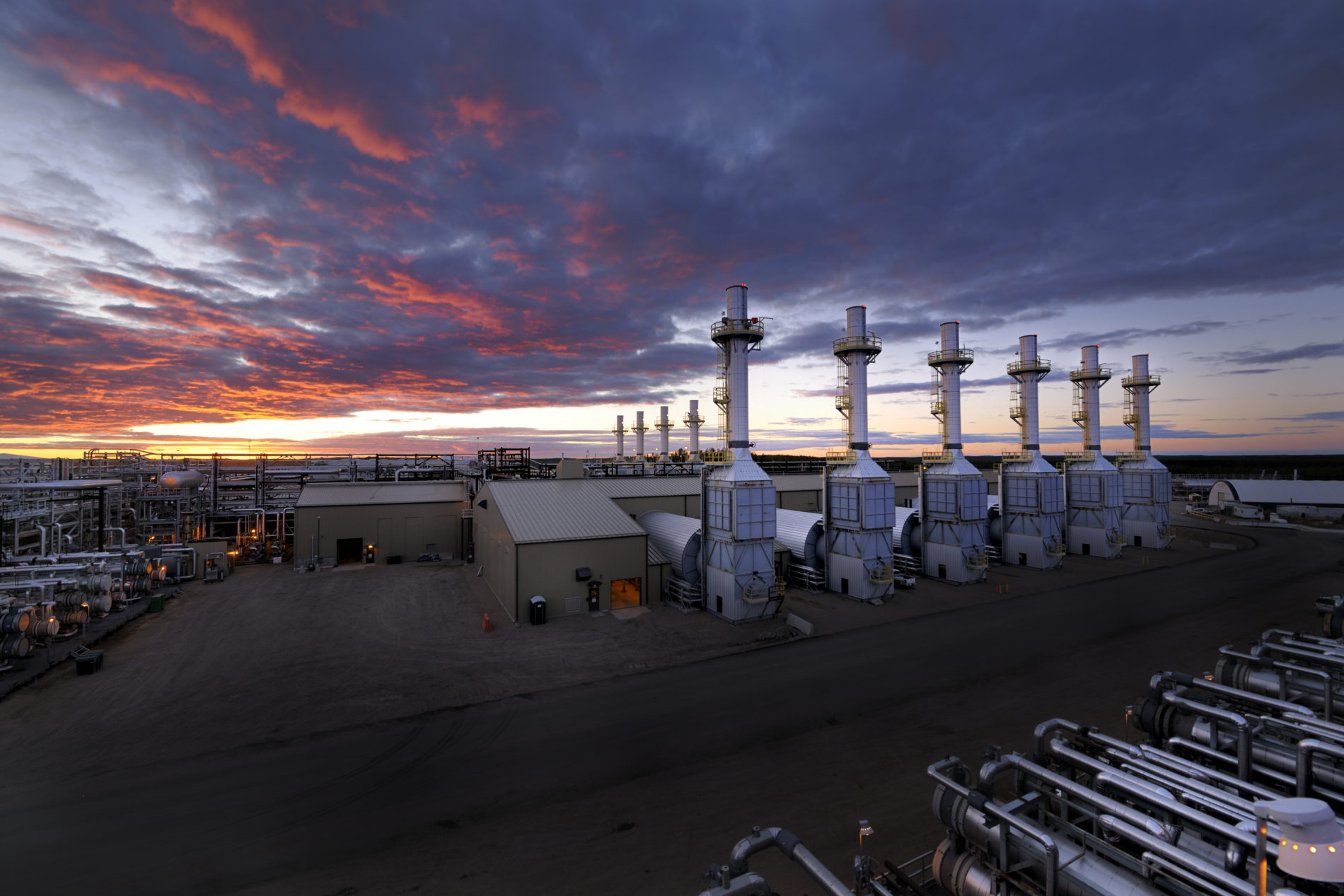
Alberta Premier Danielle Smith’s program could see Albertans paying companies to clean up oil and gas wells they’re legally responsible for, regardless of their profits. Cenovus, which operates facilities like these across the province, stands to benefit from Smith’s program. The company brought in $6.5 billion in net earnings last year. Photo: Cenovus
Of the top three companies Scotiabank says could benefit the most from this program, Cenovus raked in $6.5 billion, up from $587 million in 2021. Canadian Natural has not reported its year-end numbers, but gobbled up $2.8 billion in net revenue in the third quarter of the year alone. Paramount has also not reported its year-end results, but had a net income of $222 million in the third quarter. In 2021, it earned $237 million throughout the entire year.
Of the top three companies Scotiabank says could benefit the most from this program, Cenovus raked in $6.5 billion, up from $587 million in 2021. Canadian Natural has not reported its year-end numbers, but gobbled up $2.8 billion in net revenue in the third quarter of the year alone. Paramount has also not reported its year-end results, but had a net income of $222 million in the third quarter. In 2021, it earned $237 million throughout the entire year.
What are critics saying?
The government has faced significant backlash for the proposal, and not just from environmentalists or the Opposition.
Scotiabank’s research note, which included the analysis, said the program would benefit some producers, but has the potential to “generate negative sentiment toward the sector.” It said the program went against “the core capitalist principle that private companies should take full responsibility for the liabilities they willingly accept.”
Even Savage, now the minister of environment, rejected the plan when she was lobbied by Smith in 2021. She said the program did not align with the polluter pay principle or the province’s royalty regime, according to the Canadian Press.
She has avoided commenting on the government’s pilot proposal in recent days.
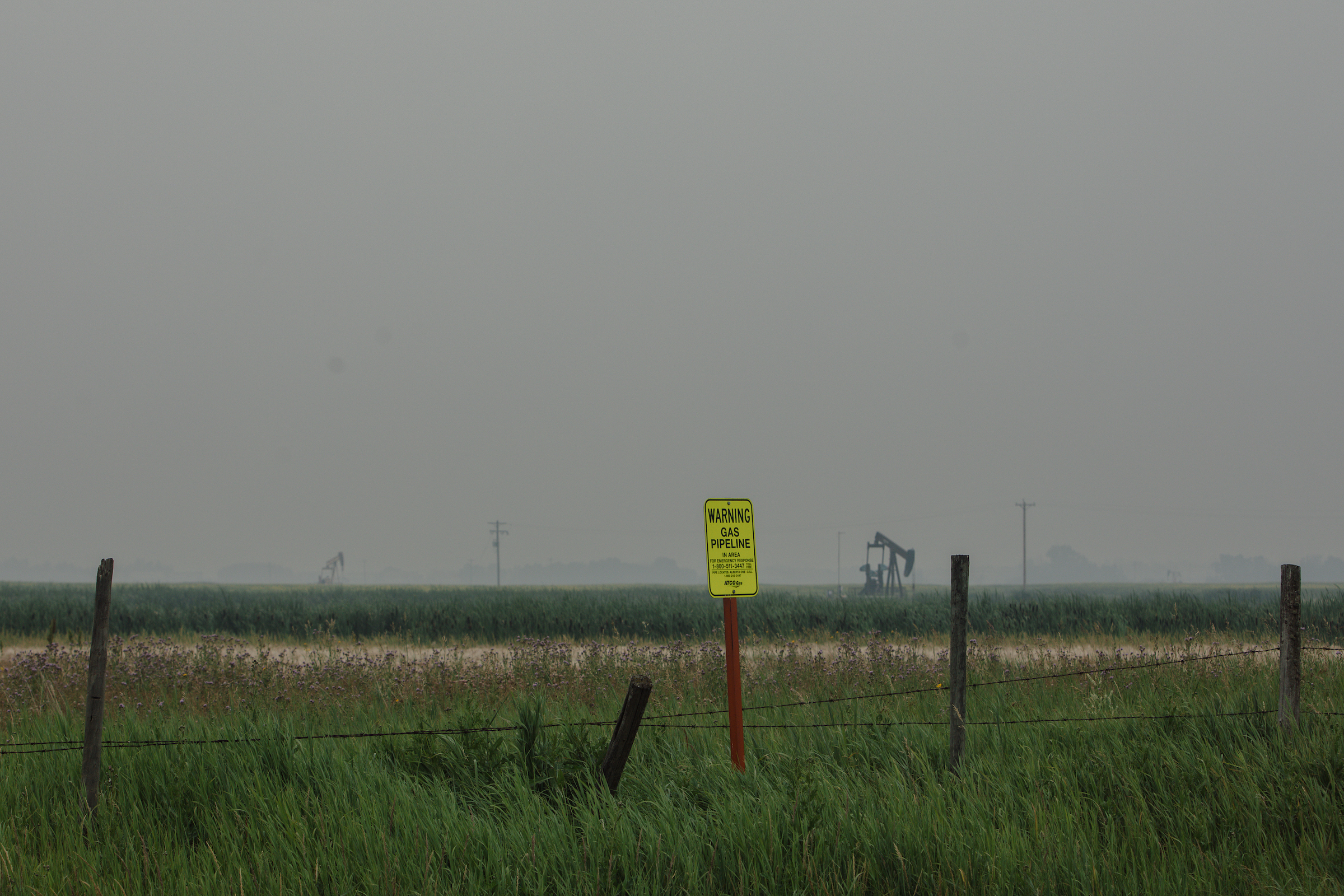
Critics like University of Alberta economist Andrew Leach are concerned Smith’s program is a “wealth transfer” from Albertan taxpayers to industry.
Others, including the NDP, have raised concerns about whether Smith’s connections to companies through her previous lobbying could be influencing her decision to pursue what many see as a giveaway. The party has tried to connect the scheme to the fact Smith has not declared the donors to her leadership campaign in the spring.
University of Alberta economist Andrew Leach, writing for CBC, called the program “a free lunch.”
“Or, more properly, a lunch paid for by Albertans,” he wrote. “It’s a wealth transfer to the oil and gas industry. Instead of ensuring the polluter pays, R-Star would have us paying the polluter.”
He also argued the program would provide the most reward when prices are high and the least when they are low, the opposite of what should happen to incentivize companies to clean up a mess spread across the province.
Photos: Amber Bracken / The Narwhal

No comments:
Post a Comment